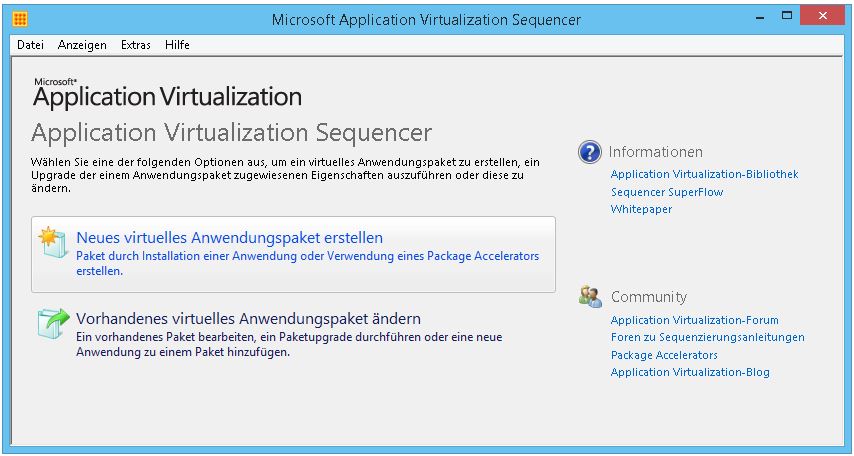

You had yet to install any binaries but you realized you made a mistake. Let’s say you gave an incorrect package name or specified the wrong PVAD and went forward with the wizard and accidentally began monitoring. So, the obvious next question would be, should we be manually resetting this bit. As soon as a sequence begins to go forward (creating a PVAD, Package Name, etc.) this bit will be set to 0 to inform the sequencer that we are no longer working with a clean sequencer. When the App-V sequencer is installed, it will create a registry key called ReadyBit located beneath HKLMSoftwareMicrosoftAppVSequencer and set this value to 1.

Starting with App-V 4.6 SP1, a detector was put in to warn users if they were about to sequence on a machine where a previous package was sequenced. This is all handled by our client to automatically so there is no need to sequence any differently.One of the most consistent recommended practices throughout the history of App-V sequencing is to always sequence on a clean sequencer. The addition of the /appvve makes sure the local process loads with the virtual environment of our App-V application. So in order to make sure the VE is loaded when we call this local process the shortcut path is amended to: In App-V 5.0 our shortcuts call executables directly as discussed here. In App-V 4.x our shortcuts were built up from sfttray commands, this intermediary process would launch the virtual environment and then invoke the necessary executable.

The last change is how the shortcut gets laid down on the client itself and loads the virtual environment. Here I have added a shortcut to a local process of Internet Explorer held at “C:\Program Files\Internet Explorer\iexplore.exe” No much but the first change is where we configure our shortcuts: So might be thinking RunVirtual or even the new integrations we have with App-V 5.0 SP2 has pretty much deprecated this technique, however there still might be instances where you want users to intentionally use a different shortcut to trigger a certain virtual application to load in with a local process. What I want to discuss in this post is what has changed and how does the client handle the shortcuts we publish. We talked about this technique in 4.x here, all these same concepts apply in 5.0 so if you are interested in the concepts jump over to the post. This is now done within the package editor rather during the sequencing workflow itself, however the functionality is identical.


 0 kommentar(er)
0 kommentar(er)
